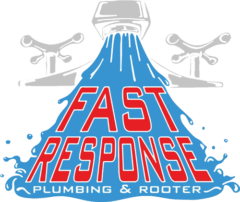Understanding Burst Pipes

Burst pipes are a serious plumbing problem that can lead to extensive damage. They are often caused by freezing temperatures, high water pressure, and aging materials. Knowing the materials involved helps us anticipate vulnerabilities in our plumbing system.
Common Causes of Burst Pipes
Freezing Temperatures
When water in a pipe freezes, it expands and creates pressure, leading to cracks or bursts. This often happens in uninsulated areas.
High Water Pressure
Excessive water pressure can strain pipes, particularly in older homes. It is important to maintain normal pressure levels to avoid damage.
Natural Disasters
Events like earthquakes can surprise us with unexpected movement, causing pipes to crack or burst. These are difficult to prevent but can be addressed with proper safeguards.
Regular checks on plumbing fixtures, like washing machines and water heaters, also help us spot issues early.
Types of Pipe Materials and Their Vulnerabilities
- Copper Pipes: Common in many homes, they are durable but can corrode over time. Proper installation can prevent some issues.
- PVC Pipes: These are popular due to their low cost and ease of use. Yet, they can become brittle in cold weather, leading to cracks.
- Galvanized Steel Pipes: Once widely used, they are prone to rust and require replacement over time. Regular inspection is crucial.
- PEX Pipes: Known for flexibility, these resist freezing better than other types. Though newer, we must still assess their condition regularly.
Understanding these materials helps us identify potential problems before they occur.
Immediate Response and Mitigation
When a pipe bursts, addressing the issue quickly is crucial. An immediate response can significantly reduce the extent of water damage and the need for extensive repairs. We should focus on stopping the water flow and minimizing damage to the property.
Steps to Take Following a Burst Pipe
First, locate the main water shut-off valve. This step stops water from flooding the area. Turning off electricity is also important to prevent any electrical hazards. Once these are secure, assess the damage. If standing water has accumulated, using a pump can help remove it efficiently. This step initiates the drying process, making it easier for a professional team to manage the situation.
Document the damage with photos or videos. This helps in making insurance claims. Contact professional repair services promptly. Their expertise is crucial for a thorough inspection and repair.
Preventing Water Damage
To minimize water damage, after stopping the initial flow, immediate drying is vital. Use towels and mops for smaller areas. For larger spaces, dehumidifiers assist in reducing moisture levels more effectively. We might also need air movers to circulate air and speed up the drying process.
Keeping humidity levels low is essential to prevent mold growth. Professionals often utilize industrial drying equipment to ensure everything is properly dried. We need to focus on the small details, such as wet carpets or walls, as these can harbor moisture long after the water is removed.
Professional Repair and Restoration Services
When pipes burst, professional repair and restoration services are crucial. They help fix damage quickly and prevent further issues like mold and flooding.
Benefits of Hiring Professionals
Hiring experts in burst pipe repair offers many advantages. Professionals have the right tools and knowledge to assess and fix problems quickly. Their quick response can save us time and money. They are trained to provide high-quality service, reducing the chance of future repairs.
Experts also help us navigate insurance claims. They know the ins and outs of documentation, making it easier for us to get compensation. This guidance can be invaluable during stressful times.
Water Damage Restoration Process
The process of water damage restoration is essential to fixing and preventing further issues. First, professionals remove all excess water using high-powered equipment. Quick removal is key to prevent mold and other serious problems. Next, they dry and dehumidify the area, ensuring no moisture remains.
Removing damaged materials like drywall or flooring might be necessary. Then, cleaners disinfect and sanitize the area. This ensures our homes are safe and free of contaminants. It’s a step-by-step process, and each part is vital for a successful restoration.
Mold Remediation and Prevention
Mold can form quickly after water damage if we’re not careful. Professionals help by treating affected areas with mold-killing products. They use special techniques to clean and remove mold from surfaces, making homes safe again.
Preventing mold is also part of their job. Experts advise us on ways to keep moisture levels low, which helps avoid mold in the future. With their help, we can feel confident our homes are protected against mold risks.
Costs and Insurance Considerations
When dealing with burst pipes, understanding the costs involved and knowing how to handle insurance claims can make the process smoother. We’ll explore repair expenses and guide you through insurance.
Understanding Repair and Restoration Costs
Repairing a burst pipe can vary in cost. Factors like pipe location, extent of damage, and need for professional labor impact prices.
For example, fixing a pipe behind a wall may require more work than a visible one. Basement flooding and significant water damage add to expenses. On average, costs range from a few hundred to several thousand dollars. It’s crucial to discuss with professionals for clear estimates. Restoration may involve drying, replacing materials, or applying anti-mold treatments. Let’s ensure our homes are safe and avoid bigger problems later on.
Navigating Insurance Claims
Filing insurance claims can be complex, especially when floods and water damage occur. We must first review our insurance policy to determine coverage for burst pipes. Some policies include flood damage while others do not.
Documenting the damage is important. Take photos and keep receipts of repairs. When working with insurance adjusters, clear communication is key. Providing detailed information helps speed up the claim process. Some companies might cover part of the expenses, reducing out-of-pocket costs for us. Seeking professional advice can clarify the claims process and increase the chance of coverage approval.
